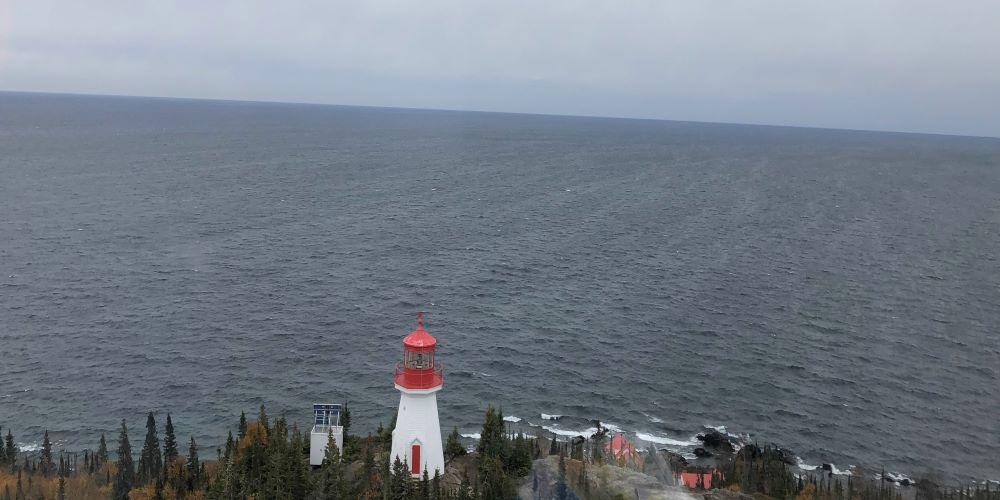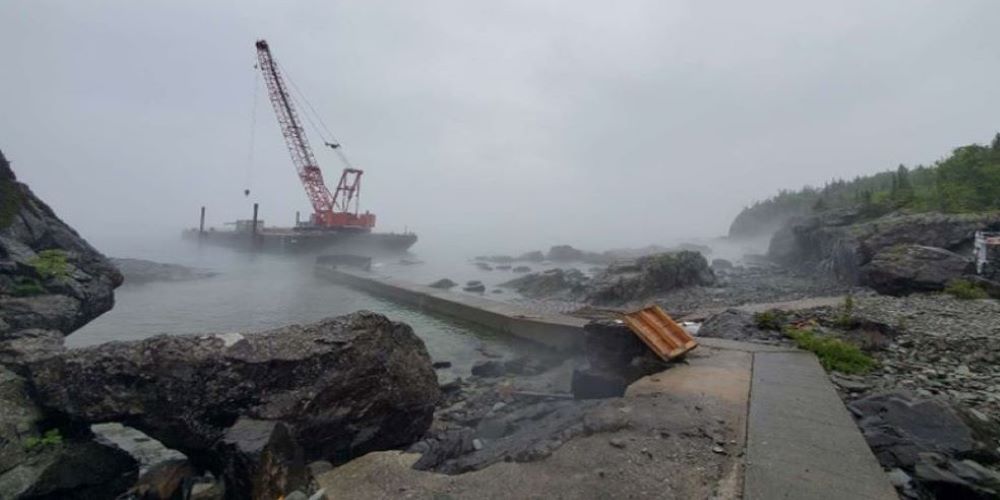An environmental makeover for a remote lighthouse site

At the northern tip of Lake Superior in Ontario lies the Slate Islands archipelago, believed to have been formed by a meteorite strike millions of years ago. Today, the archipelago is home to Lake Superior's highest light: a lighthouse on Patterson Island standing at 224 feet above sea level.
In addition to the lighthouse, the site includes a fog alarm building, a former oil house building, 2 dwellings and a diesel generator building. Most of these structures were built in 1903. Like many buildings from this period, they contained substances now recognized as hazardous.
Fisheries and Oceans Canada launched an environmental project to remove the hazardous substances, namely lead and asbestos, from this notable lighthouse site. Public Services and Procurement Canada (PSPC) supported them by awarding the contracts and overseeing the delivery of the work. A second stage of the project is now underway, with similar PSPC support.
This multi-year cleanup (or remediation) project is required to safely manage the operations at what is now the Canadian Coast Guard's Slate Islands Lighthouse.
Given the location, age and surroundings of the lighthouse site, it's quite a unique project. It requires more than meets the eye (helicopters, barges and living on site).
Remediation of the structures and the soil
A remediation project typically starts with studies to figure out the best methods to approach it.
In this case, even some of the studies were a bit unusual.
PSPC engaged a structural engineer to determine if the historic buildings could withstand the planned activities. Moreover, as the site is only accessible by boat or helicopter, a marine assessment was needed to determine which mainland port to use to access it. Other studies looked at how to conduct the project with the least impact on the natural landscape and vulnerable wildlife.

Once work on the structures began, a crew of over 20 people came to remove all the lead paint from the exteriors and apply an important sealant before finishing up with a fresh coat of clean paint. Asbestos-containing caulking around windows was replaced with modern material, and a new roof was constructed for the fog alarm building because the old roof tiles also contained asbestos.
The difficulty of accessing the Slate Islands brought its fair share of challenges to the project. The crew had to live and work there for several weeks at a time over the course of 2 summers, and all the equipment and materials had to be airlifted or transported to and from the area using barges.
PSPC recently awarded a contract for the cleanup of the soil around the site structures. The impacted soil will be excavated and transported, over water again, for disposal at a suitable facility. The entire remediation initiative at this site is part of the Federal Contaminated Sites Action Plan.
When the work is done, the local environment will be clean from the historic contaminants that were present at the site, and the lighthouse and other structures can continue to serve Canadians safely.
To learn more about the services provided by PSPC, visit Public Services and Procurement Canada. You can also check out Our Stories for articles about PSPC people and projects making a difference in the lives of Canadians.